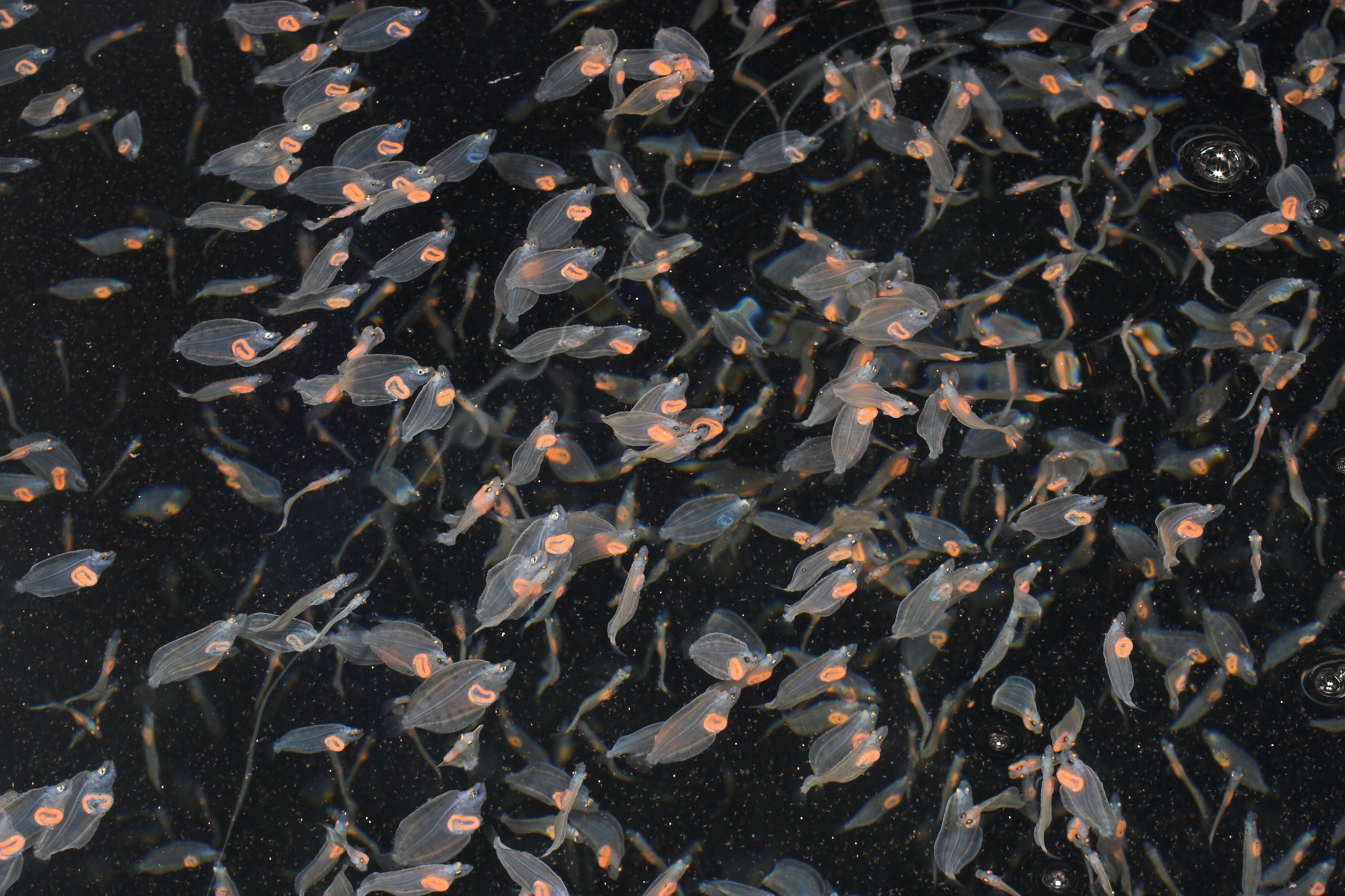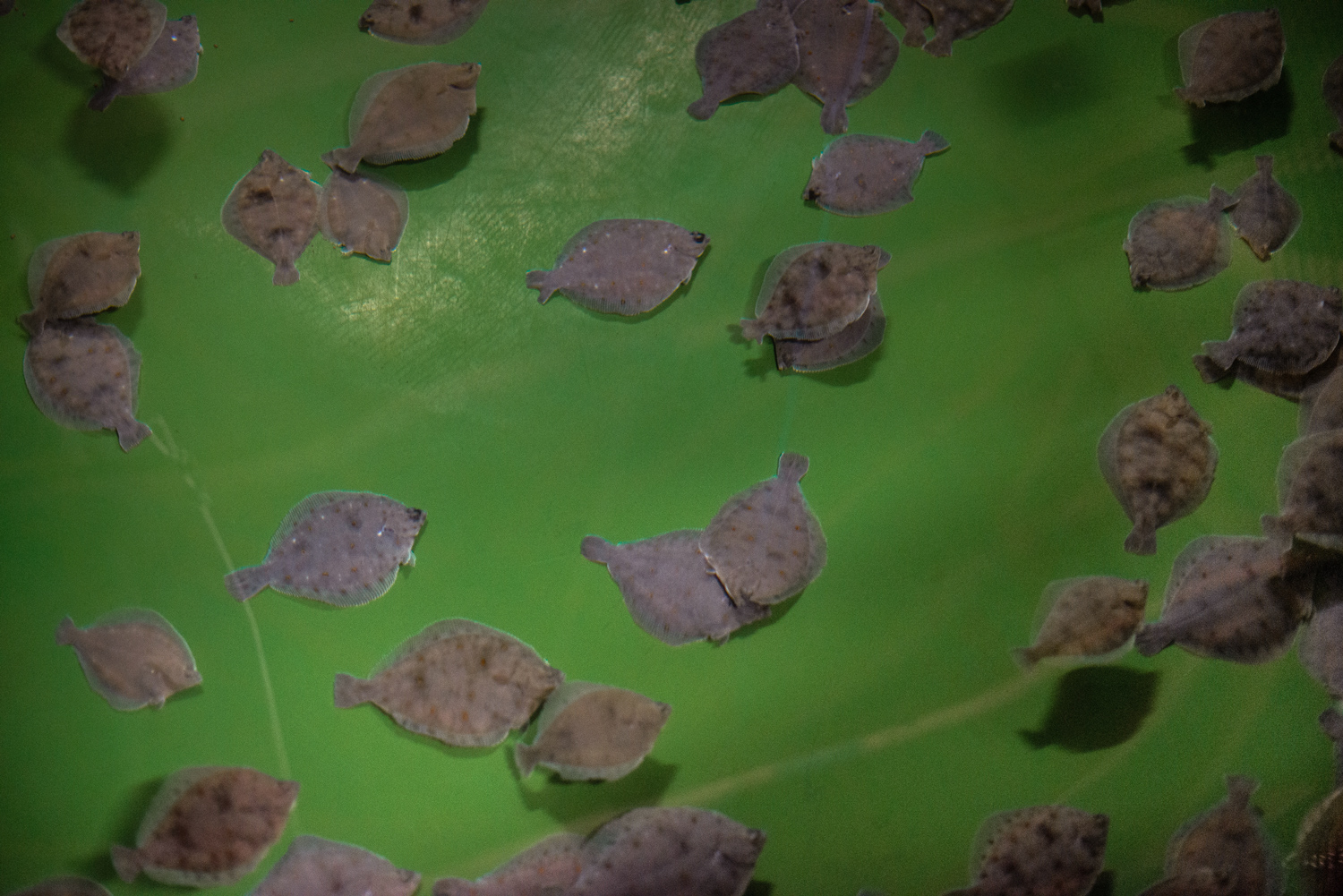Researchers identify the halibut’s sex gene

Hokveiter veks raskare og blir større enn hannkveiter. Men den genetiske forskjellen mellom hannar og hoer er relativt liten. På bildet ser vi kveitene Ragnfrid og Janette ved HI sin forskingsstasjon i Austevoll.
Photo: Arnbjørg Aagesen / IMRPublished: 15.03.2022 Updated: 21.04.2022
The genome is the cookbook we all carry with us in the cells, which contains the recipe for a new individual. In halibut, the cookbook consists of 24 volumes - or chromosomes - each containing a number of sub-recipes for different properties.
This large collection of recipes is what the researchers have now managed to roll out. Through analyzes of DNA from halibut at the research station in Austevoll, they have – among other things – found the small difference that determines the sex: a gene on chromosome 13 called gsdf.
Halibut sex
It may sound theoretical, but the hunt for the sex gene for halibut sprang from a completely practical problem. Halibut has become a sought-after species in fish farming in recent years; and fish farmers prefer to have only female halibut, which grow larger and faster than males. But it is impossible to see any difference between males and females until sexual maturation, by which time the halibut have already grown quite large.
“Therefore, there was a need for a method that allowed you to take a small tissue sample and see if it is a male or a female. To be able to do that, one needed to find genetic differences between the sexes,” says researcher Rolf Brudvik Edvardsen.
The fish farming company Sterling White Halibut therefore asked the scientists if they could do just that. "We’ll fix that," replied Edvardsen. It turned out to be a hunt for the proverbial needle in the haystack.
X and Y
“When you sequence a genome, you map all the base pairs in all the chromosomes,” explains Edvardsen, who led the study together with HI colleague Birgitta Norberg in Austevoll and Carl-Johan Rubin at Uppsala University in Sweden. “There are 600 million base pairs in the halibut’s genome. Of these, perhaps only a few hundred base pairs are the difference between a male and a female. It is much smaller than in mammals.”
Like humans and other mammals, Atlantic halibut has an XX/XY genetic sex determination system. This means that the females have two X chromosomes, while the males have one X and one Y chromosome.
In mammals, these chromosomes are very different quadrants both in size and in what genes are present on the chromosome. In halibut, the difference is very small, and all the same genes are on X and Y, the researcher explains.

Jumping gene
When they mapped the genome and compared it between male and female halibut, the researchers still found what they were looking for. On chromosome 13, they discovered an area in the males that differs from the females, and which makes this chromosome a Y chromosome.
In this area there are parts of a so-called transposon, also known as a “jumping gene”: a piece of DNA that has moved from another place in the genome at a time in the species' evolutionary history. This transposon sits nearby and enhances the activity of the gsdf gene, which in turn leads to the development of testicles.
“The Y chromosome must have differed from the X chromosome less than 4.5 million years ago. This is relatively new in an evolutionary context,” says Edvardsen. By comparison, the human X and Y chromosomes differed as much as 250-300 million years ago.
Edvardsen explains that Pacific halibut – a close relative of Atlantic halibut – has the opposite system of sex chromosomes, namely ZZ/ZW. In this system, the females have two different sex chromosomes (Z and W). This system is most common in birds.
“Mammals and birds have very old and stable sex chromosomes. In fish, this is much more changeable, and they can more easily form new sex chromosomes,” says Edvardsen.
Unusual phenomenon
The explanation may lie in another special phenomenon that the researchers found in the halibut genome, namely heterochiasmy. In short, this means that all chromosomes behave like sex chromosomes, with so-called limited recombination.
In humans, X and Y cannot be recombined; if you inherit a Y from your father, you inherit this chromosome in its entirety. For all other chromosomes you get a little from mom and a little from dad. In halibut, the researchers found areas with limited recombination on all chromosomes.
“The chromosome is divided in such a way that one part only recombines in females, and the other only in males. This phenomenon is very unusual; I had not heard of it a few years ago,” says Edvardsen, adding: “And because the chromosome already has the limited recombination that the sex chromosome has, it also takes little before you create a new sex chromosome.”

Basis for further research
The researcher believes that the new findings, recently published in the journal PLOS Genetics, can contribute to a better understanding of how sex chromosomes arise and how the early development of a sex chromosome takes place. “In addition, we show that halibut and flatfish are excellent models for a closer study of the largely unexplored phenomenon of heterochiasmy,” he adds.
Edvardsen and his colleagues have already received funding to further research this phenomenon from the Norwegian Research Council's program for groundbreaking research (Fripro). In this study, they will examine European plaice as well as Atlantic Halibut.
“Plaice is another promising flatfish species for fish farming and can also be a good model for studying heterochiasmy. We have both plaice and halibut at the research station at Austevoll,” says Edvardsen.
The research also provides a basis for experiments with gene editing. Edvardsen is central to HI's work with gene editing of salmon using the CRISPR method. “We will now use the same technology on plaice and halibut,” he says.
Reference
Edvardsen, Rolf Brudvik, Ola Wallerman, Tomasz Furmanek, Lene Kleppe, Patric Jern, Andreas Wallberg, Erik Kjærner-Semb, Stig Mæhle, Sara Karolina Olausson, Elisabeth Sundström, Torstein Harboe, Ragnfrid Mangor-Jensen, Margareth Møgster, Prescilla Perrichon, Birgitta Norberg and Carl-Johan Rubin. "Heterochiasmy and the establishment of gsdf as a novel sex determining gene in Atlantic halibut". PLoS Genetics 18, 2 (2022). Link: https://doi.org/10.1371/journal.pgen.1010011
